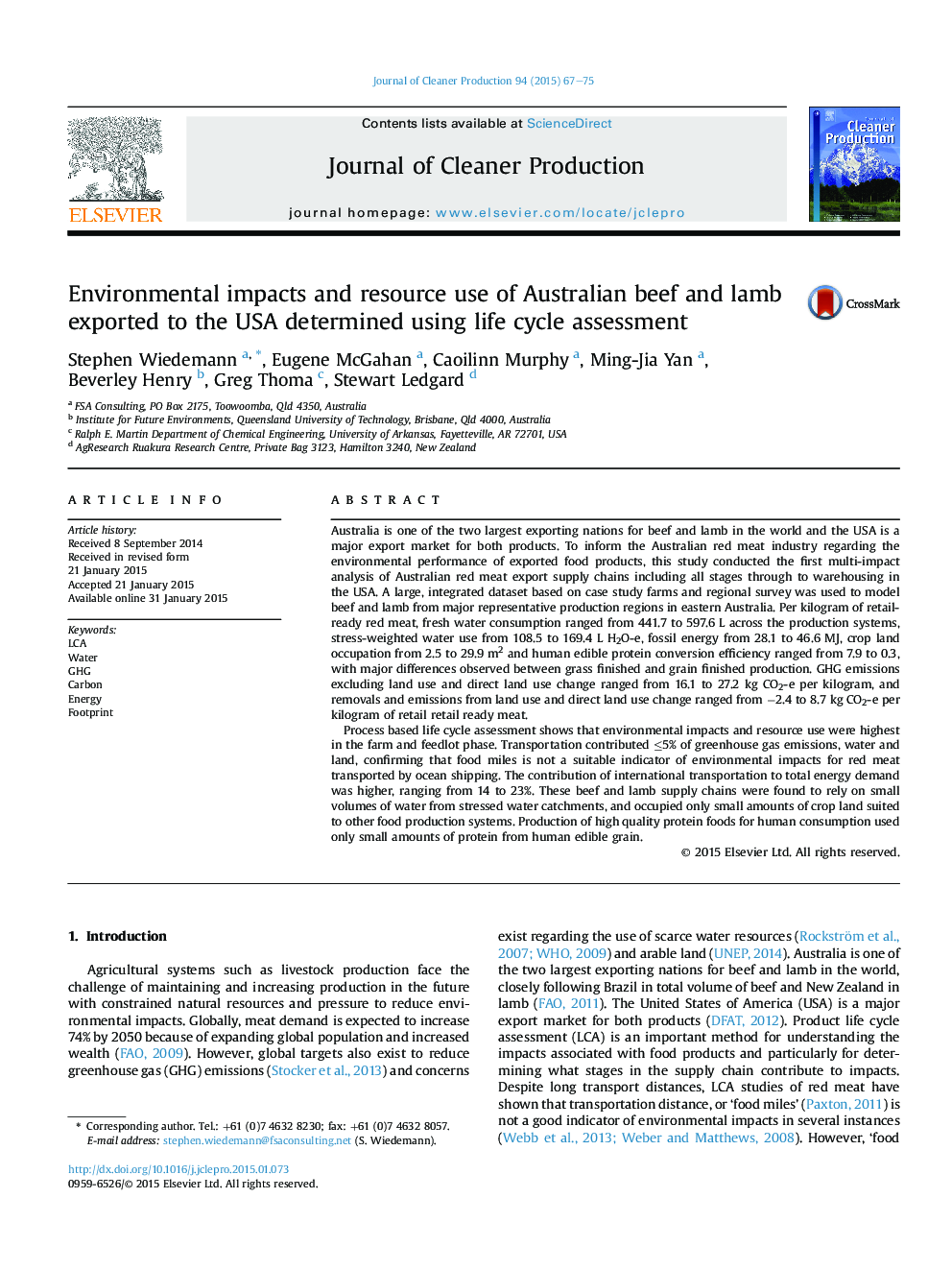| Article ID | Journal | Published Year | Pages | File Type |
|---|---|---|---|---|
| 8104544 | Journal of Cleaner Production | 2015 | 9 Pages |
Abstract
Process based life cycle assessment shows that environmental impacts and resource use were highest in the farm and feedlot phase. Transportation contributed â¤5% of greenhouse gas emissions, water and land, confirming that food miles is not a suitable indicator of environmental impacts for red meat transported by ocean shipping. The contribution of international transportation to total energy demand was higher, ranging from 14 to 23%. These beef and lamb supply chains were found to rely on small volumes of water from stressed water catchments, and occupied only small amounts of crop land suited to other food production systems. Production of high quality protein foods for human consumption used only small amounts of protein from human edible grain.
Related Topics
Physical Sciences and Engineering
Energy
Renewable Energy, Sustainability and the Environment
Authors
Stephen Wiedemann, Eugene McGahan, Caoilinn Murphy, Ming-Jia Yan, Beverley Henry, Greg Thoma, Stewart Ledgard,
